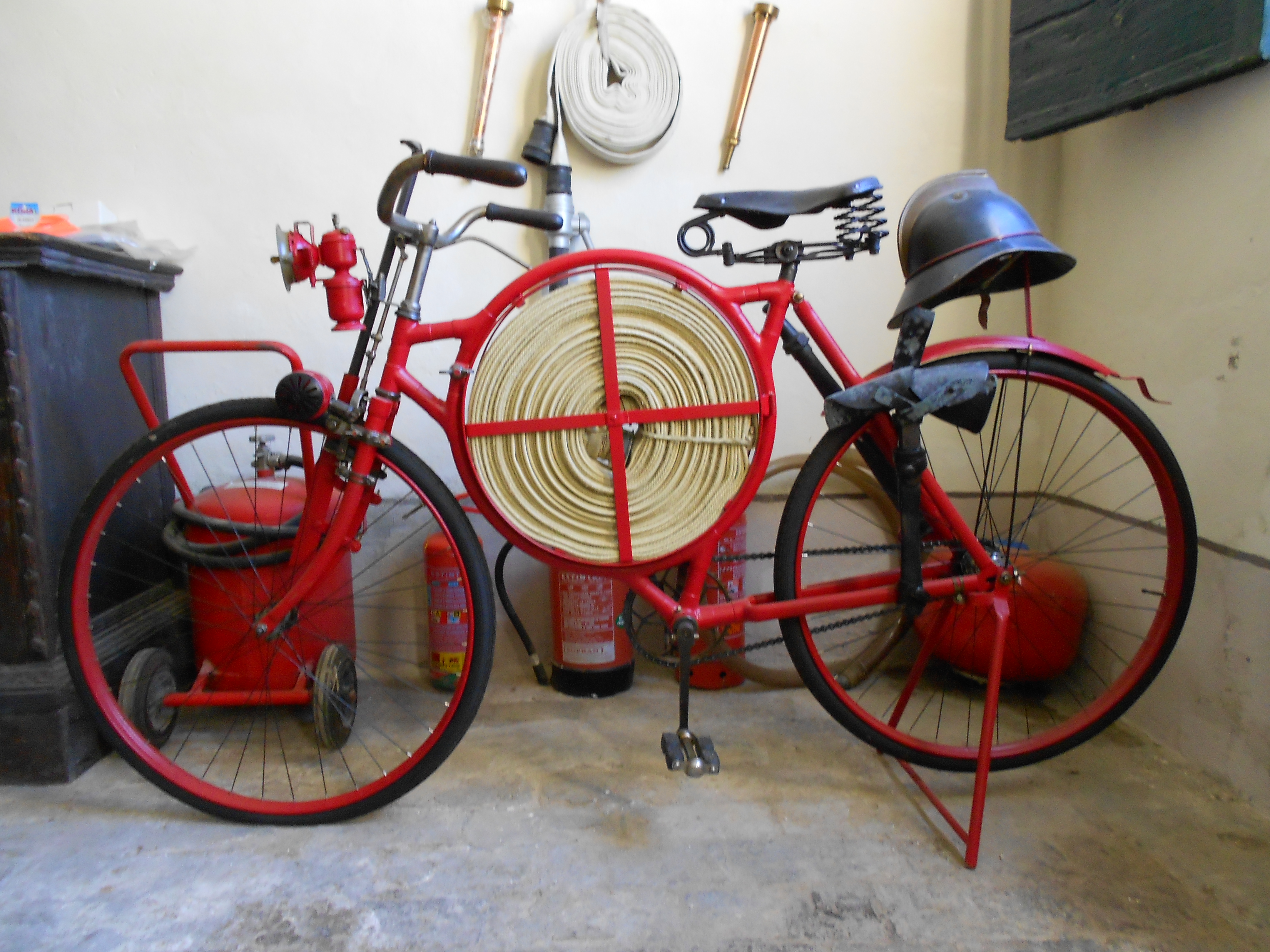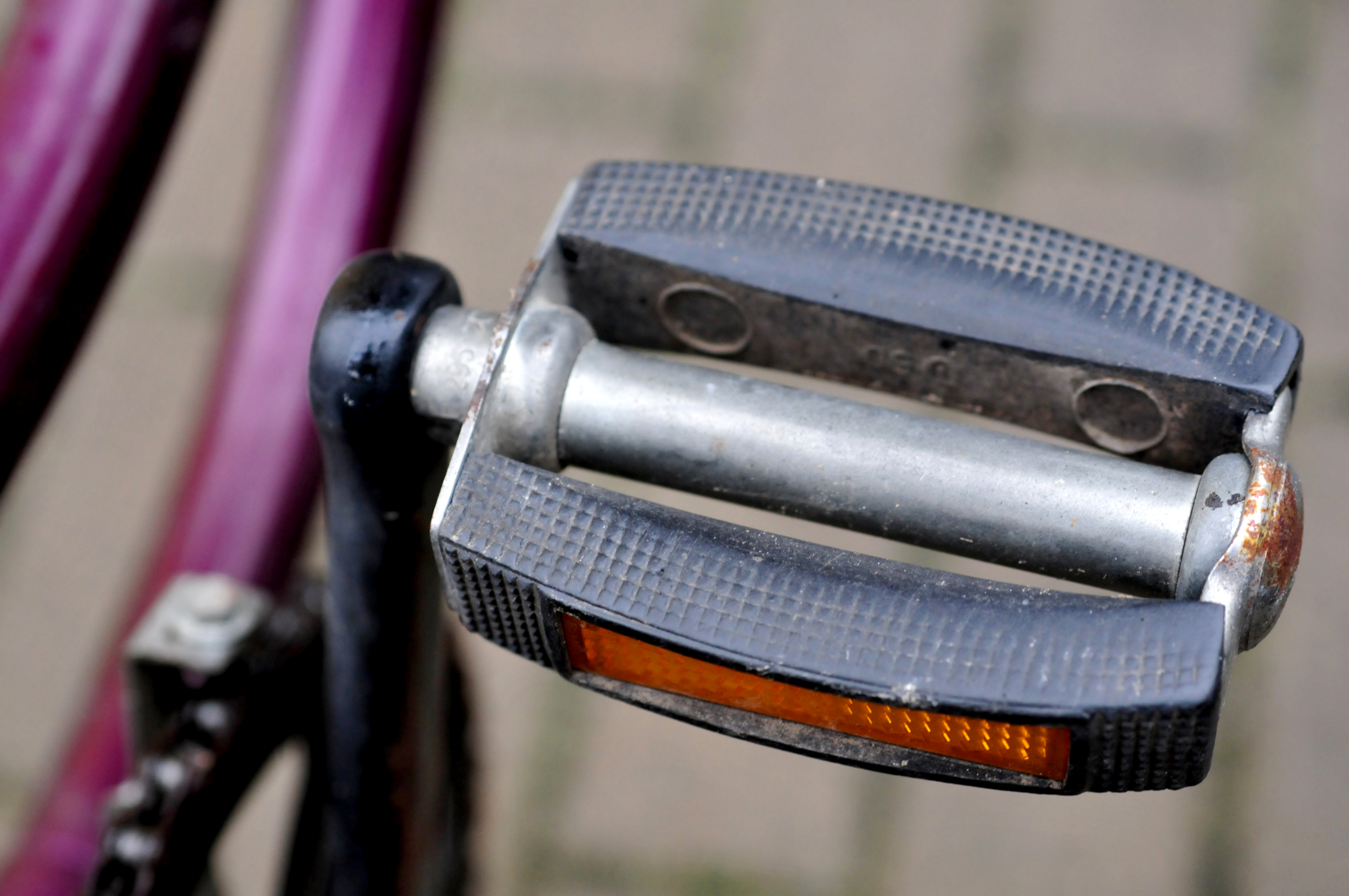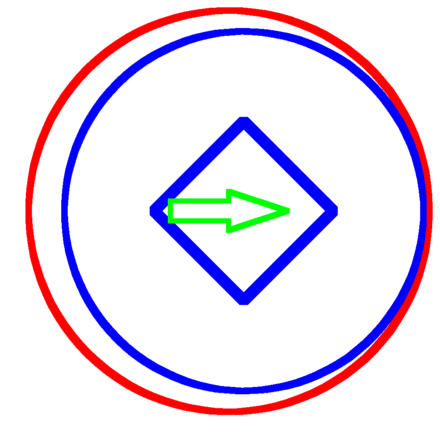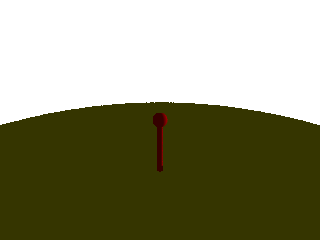|
Helical Thread
A screw thread is a helical structure used to convert between rotational and linear movement or force. A screw thread is a ridge wrapped around a cylinder or cone in the form of a helix, with the former being called a ''straight'' thread and the latter called a ''tapered'' thread. A screw thread is the essential feature of the screw as a simple machine and also as a threaded fastener. The mechanical advantage of a screw thread depends on its ''lead'', which is the linear distance the screw travels in one revolution. In most applications, the lead of a screw thread is chosen so that friction is sufficient to prevent linear motion being converted to rotary, that is so the screw does not slip even when linear force is applied, as long as no external rotational force is present. This characteristic is essential to the vast majority of its uses. The tightening of a fastener's screw thread is comparable to driving a wedge into a gap until it sticks fast through friction and slight ... [...More Info...] [...Related Items...] OR: [Wikipedia] [Google] [Baidu] |
Jack (device)
A jack is a mechanical lifting device used to apply great forces or lift heavy loads. A mechanical jack employs a screw thread for lifting heavy equipment. A hydraulic jack uses hydraulic power. The most common form is a car jack, floor jack or garage jack, which lifts vehicles so that maintenance can be performed. Jacks are usually rated for a maximum lifting capacity (for example, 1.5 tons or 3 tons). Industrial jacks can be rated for many tons of load. Etymology The personal name ''Jack'', which came into English usage around the thirteenth century as a nickname form of ''John'', came in the sixteenth century to be used as a colloquial word for 'a man (of low status)' (much as in the modern usage 'jack of all trades, master of none'). From here, the word was 'applied to things which in some way take the place of a lad or man, or save human labour'. The first attestation in the ''Oxford English Dictionary'' of ''jack'' in the sense 'a machine, usually portable, for lifti ... [...More Info...] [...Related Items...] OR: [Wikipedia] [Google] [Baidu] |
Torque
In physics and mechanics, torque is the rotational analogue of linear force. It is also referred to as the moment of force (also abbreviated to moment). The symbol for torque is typically \boldsymbol\tau, the lowercase Greek letter ''tau''. When being referred to as moment of force, it is commonly denoted by . Just as a linear force is a push or a pull applied to a body, a torque can be thought of as a twist applied to an object with respect to a chosen point; for example, driving a screw uses torque to force it into an object, which is applied by the screwdriver rotating around its axis to the drives on the head. Historical terminology The term ''torque'' (from Latin , 'to twist') is said to have been suggested by James Thomson and appeared in print in April, 1884. Usage is attested the same year by Silvanus P. Thompson in the first edition of ''Dynamo-Electric Machinery''. Thompson describes his usage of the term as follows: Today, torque is referred to using d ... [...More Info...] [...Related Items...] OR: [Wikipedia] [Google] [Baidu] |
Lug Nut
A lug nut or wheel nut is a fastener, specifically a nut (hardware), nut, used to secure a wheel on a vehicle. Typically, lug nuts are found on automobiles, trucks (lorries), and other large vehicles using rubber tires. Design A lug nut is a nut (hardware), nut fastener with one rounded or conical (tapered) end, used on steel and most aluminum wheels. A set of lug nuts is typically used to secure a wheel to threaded wheel studs and thereby to a vehicle's axles. Some designs (Audi, BMW, Mercedes-Benz, Saab, Volkswagen) use lug Screw, bolts or wheel bolts instead of nuts, which screw into a tapped (threaded) hole in the wheel's hub or brake drum brake, drum or brake Disc brake, disc. The conical lug's taper is normally 60 degrees (although 45 degrees is common for wheels designed for racing applications), and is designed to help center the wheel accurately on the axle, and to reduce the tendency for the nut to loosen due to Precession (mechanical), fretting induced precession, ... [...More Info...] [...Related Items...] OR: [Wikipedia] [Google] [Baidu] |
Bench Grinder
A bench grinder is a benchtop type of grinding machine used to drive abrasive wheels. A pedestal grinder is a similar or larger version of grinder that is mounted on a pedestal, which may be bolted to the floor or may sit on rubber feet. These types of grinders are commonly used to hand grind various cutting tools and perform other rough grinding. Depending on the bond and grade of the grinding wheel, it may be used for sharpening cutting tools such as tool bits, drill bits, chisels, and gouges. Alternatively, it may be used to roughly shape metal prior to welding or fitting. A wire brush wheel or buffing wheels can be interchanged with the grinding wheels in order to clean or polish workpieces. Stiff buffing wheels can also be used when deburring is the task at hand. Some buffing machines (buffers) are built on the same concept as bench grinders except for longer housings and arbors with buffing wheels instead of grinding wheels. Bench grinders are standard equipme ... [...More Info...] [...Related Items...] OR: [Wikipedia] [Google] [Baidu] |
Bicycle
A bicycle, also called a pedal cycle, bike, push-bike or cycle, is a human-powered transport, human-powered or motorized bicycle, motor-assisted, bicycle pedal, pedal-driven, single-track vehicle, with two bicycle wheel, wheels attached to a bicycle frame, frame, one behind the other. A is called a cyclist, or bicyclist. Bicycles were introduced in the 19th century in Europe. By the early 21st century there were more than 1 billion bicycles. There are many more bicycles than cars. Bicycles are the principal Mode of transport, means of transport in many regions. They also provide a popular form of recreation, and have been adapted for use as Toy, children's toys. Bicycles are used for Physical fitness, fitness, Military bicycle, military and Police bicycle, police applications, Bicycle messenger, courier services, Cycle sport, bicycle racing, and artistic cycling. The basic shape and configuration of a typical Safety bicycle, upright or "safety" bicycle, has changed lit ... [...More Info...] [...Related Items...] OR: [Wikipedia] [Google] [Baidu] |
Bicycle Pedal
The pedal is the part of a bicycle that the rider pushes with their foot to propel the vehicle. It provides the connection between the cyclist's foot or Cycling shoe, shoe and the Crankset, crank allowing the leg to turn the bottom bracket spindle and propel the bicycle's wheels. A pedal usually consists of a axle, spindle that threads into the end of the crank, and a body on which the foot rest is attached, that is free to rotate on Bearing (mechanical), bearings with respect to the spindle. Pedals were initially attached to cranks connecting directly to the driven (usually front) wheel. The safety bicycle, as it is known today, came into being when the pedals were attached to a crank driving a sprocket that transmitted power to the driven wheel by means of a roller chain. Types Just as bicycles come in many varieties, there are different types of pedals to support different types of cycling. Flat and platform Traditionally, platform pedals were pedals with a relatively large ... [...More Info...] [...Related Items...] OR: [Wikipedia] [Google] [Baidu] |
Precession (mechanical)
Precession is the process of a round part in a round hole, rotating with respect to each other, wherein the inner part begins rolling around the circumference of the outer bore, in a direction opposite of rotation. This is caused by too much clearance between them and a radial force on the part that constantly changes direction. The direction of rotation of the inner part is opposite to the direction of rotation of the radial force. In a rotating machine, such as motor, engine, gear train, etc., precession can occur when too much clearance exists between a shaft and a bushing, or between the races and rolling elements in roller and ball bearings. Often a result of wear, inadequate lubrication (too little or too thin), or lack of precision engineering, such precession is usually accompanied by excess vibration and an audible rubbing or buzzing noise. This tends to accelerate the wear process, possibly leading to spalling, galling, or false brinelling (fretting wear) of t ... [...More Info...] [...Related Items...] OR: [Wikipedia] [Google] [Baidu] |
Right Hand Grip Rule
In mathematics and physics, the right-hand rule is a convention and a mnemonic, utilized to define the orientation of axes in three-dimensional space and to determine the direction of the cross product of two vectors, as well as to establish the direction of the force on a current-carrying conductor in a magnetic field. The various right- and left-hand rules arise from the fact that the three axes of three-dimensional space have two possible orientations. This can be seen by holding your hands together with palms up and fingers curled. If the curl of the fingers represents a movement from the first or x-axis to the second or y-axis, then the third or z-axis can point along either right thumb or left thumb. History The right-hand rule dates back to the 19th century when it was implemented as a way for identifying the positive direction of coordinate axes in three dimensions. William Rowan Hamilton, recognized for his development of quaternions, a mathematical system for rep ... [...More Info...] [...Related Items...] OR: [Wikipedia] [Google] [Baidu] |
Clockwise
Two-dimensional rotation can occur in two possible directions or senses of rotation. Clockwise motion (abbreviated CW) proceeds in the same direction as a clock's hands relative to the observer: from the top to the right, then down and then to the left, and back up to the top. The opposite sense of rotation or revolution is (in Commonwealth English) anticlockwise (ACW) or (in North American English) counterclockwise (CCW). Three-dimensional rotation can have similarly defined senses when considering the corresponding angular velocity vector. Terminology Before clocks were commonplace, the terms " sunwise" and "deasil", "deiseil" and even "deocil" from the Scottish Gaelic language and from the same root as the Latin "dexter" ("right") were used for clockwise. " Widdershins" or "withershins" (from Middle Low German "weddersinnes", "opposite course") was used for counterclockwise. The terms clockwise and counterclockwise can only be applied to a rotational motion once a side ... [...More Info...] [...Related Items...] OR: [Wikipedia] [Google] [Baidu] |
Right-hand Grip Rule
In mathematics and physics, the right-hand rule is a convention and a mnemonic, utilized to define the orientation of axes in three-dimensional space and to determine the direction of the cross product of two vectors, as well as to establish the direction of the force on a current-carrying conductor in a magnetic field. The various right- and left-hand rules arise from the fact that the three axes of three-dimensional space have two possible orientations. This can be seen by holding your hands together with palms up and fingers curled. If the curl of the fingers represents a movement from the first or x-axis to the second or y-axis, then the third or z-axis can point along either right thumb or left thumb. History The right-hand rule dates back to the 19th century when it was implemented as a way for identifying the positive direction of coordinate axes in three dimensions. William Rowan Hamilton, recognized for his development of quaternions, a mathematical system for rep ... [...More Info...] [...Related Items...] OR: [Wikipedia] [Google] [Baidu] |
Screw Thread Handedness
A screw is an externally helical threaded fastener capable of being tightened or released by a twisting force (torque) to the screw head, head. The most common uses of screws are to hold objects together and there are many forms for a variety of materials. Screws might be inserted into holes in assembled parts or a screw may form its own thread. The #Differentiation between bolt and screw, difference between a screw and a bolt is that the latter is designed to be tightened or released by torquing a Nut (hardware), nut. The screw head on one end has a slot or other feature that commonly requires a tool to transfer the twisting force. Common tools for driving screws include screwdrivers, wrenches, coins and hex keys. The head is usually larger than the body, which provides a ''bearing surface'' and keeps the screw from being driven deeper than its length; an exception being the ''set screw'' (aka grub screw). The cylindrical portion of the screw from the underside of the head t ... [...More Info...] [...Related Items...] OR: [Wikipedia] [Google] [Baidu] |








